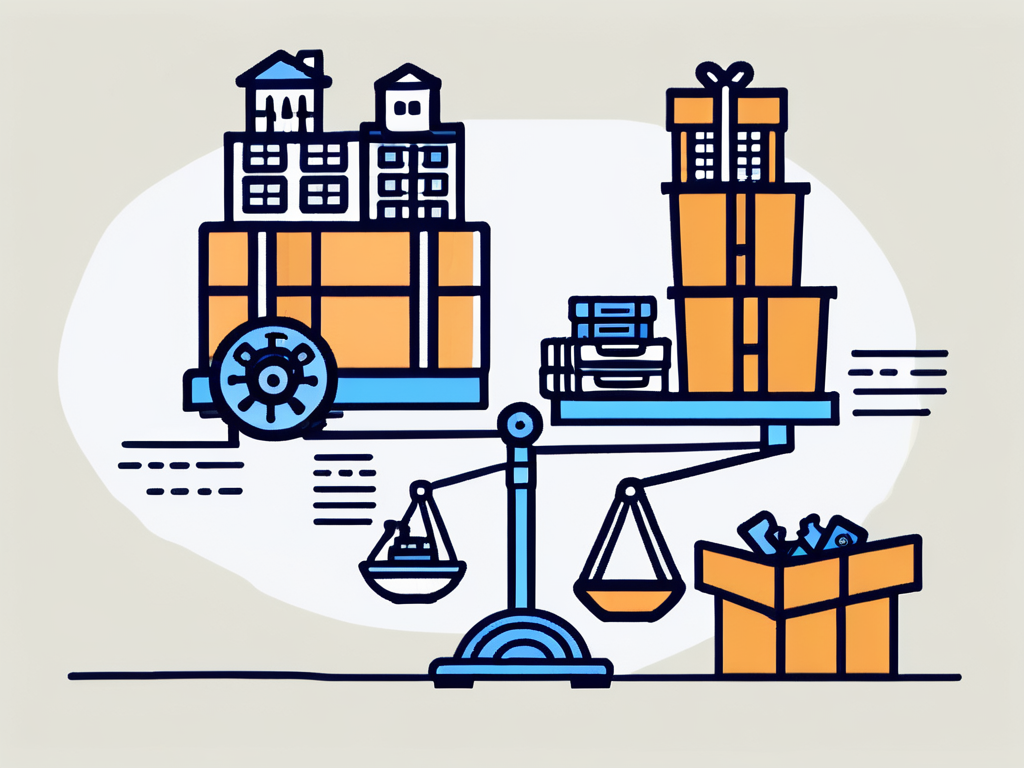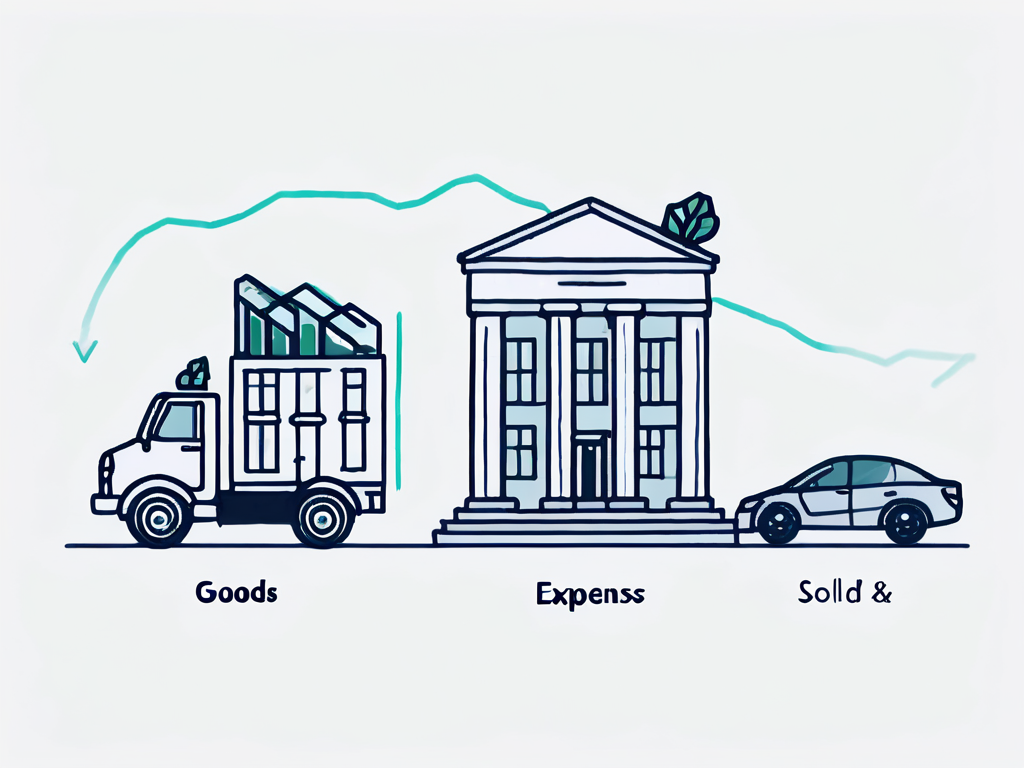Uncover the distinction between Cost of Goods Sold and Operating Expenses in this insightful article.
rEAD MORE
Are you curious about the financial aspects of running a business? Do terms like "cost of goods sold" and "operating expenses" leave you scratching your head? If so, you're not alone! Understanding the difference between these two concepts is crucial for managing your business finances effectively. In this article, we will delve into the world of cost of goods sold (COGS) and operating expenses, exploring their definitions, roles in business operations, distinctions, and impacts on financial statements. By the end, you'll have a clear understanding of how these elements contribute to the overall success of your business.
Let's start by defining cost of goods sold, also known as COGS. This term refers to the direct costs associated with producing or acquiring the goods or services that a company sells to customers.

COGS includes expenses such as materials, labor, and manufacturing overhead directly related to the production process. Essentially, it represents the costs that can be directly attributed to the creation of a product or delivery of a service.
Calculating COGS is crucial for businesses as it helps determine the gross profit margin. By subtracting COGS from the total revenue generated, companies can ascertain how much profit they are making from their core operations. This figure is essential for evaluating the efficiency of the production process and pricing strategies.
On the other hand, operating expenses encompass the day-to-day costs of running a business that are not directly tied to the production of goods or services. These expenses are necessary for the regular operation and maintenance of the business.
Operating expenses include items such as rent, utilities, salaries, advertising, and insurance. These costs are incurred regardless of the level of production or sales and are essential for keeping the business up and running.
Monitoring operating expenses is vital for businesses to ensure financial stability and profitability. By analyzing these expenses regularly, companies can identify areas where costs can be reduced or optimized. Effective management of operating expenses can lead to improved cash flow and overall financial health.
When it comes to calculating profits, the cost of goods sold (COGS) plays a significant role. COGS includes all the direct costs associated with producing goods or services, such as raw materials, labor, and manufacturing overhead. By subtracting COGS from your total revenue, you arrive at your gross profit. Gross profit represents the amount of money left after deducting the expenses directly tied to the production process.

Effective management of COGS is essential for maximizing profitability. Businesses can improve their gross profit margins by implementing strategies such as optimizing inventory levels, reducing waste in production processes, or investing in technology to streamline operations. By controlling production costs, negotiating better deals with suppliers, or finding more efficient manufacturing processes, companies can enhance their competitiveness in the market and achieve sustainable growth.
Operating expenses are another critical component in the financial management of a business. These expenses encompass all the costs not directly related to production, such as rent, utilities, salaries, marketing, and administrative expenses. While they do not contribute to the creation of products or services, operating expenses are essential for maintaining the necessary infrastructure and resources that support daily operations.
Managing operating expenses effectively is vital for the overall health and success of a business. By monitoring and controlling these costs, companies can optimize their spending, improve cash flow management, and make informed decisions about pricing and budgeting. Strategic cost-cutting measures, process efficiencies, and investment in technology can help businesses reduce operating expenses without compromising quality or customer satisfaction. By prioritizing cost control and efficiency, organizations can enhance their operational performance and achieve sustainable growth in the long run.
One of the key distinctions between COGS and operating expenses lies in how you calculate them. COGS is primarily calculated by summing up the direct costs associated with the production or acquisition of goods or services. This includes raw materials, labor directly involved in production, and manufacturing overhead costs.
Operating expenses, on the other hand, involve a wider range of costs that are necessary for the day-to-day operation of your business. They include both fixed costs like rent, utilities, and salaries, as well as variable expenses such as marketing, office supplies, and travel expenses. These expenses are essential for the functioning of the business but are not directly tied to the production of goods or services.
Understanding the nuances of these calculations is crucial for accurate financial reporting and decision-making within a company.
The difference between COGS and operating expenses also becomes apparent when considering their effects on gross and net profit. Gross profit is calculated by subtracting COGS from total revenue, whereas net profit is determined by subtracting all expenses, including operating expenses, from total revenue. This distinction is vital as it helps businesses analyze their profitability at different stages of the production and sales process.
Controlling COGS can directly impact gross profit margins, as any reduction in the cost of goods sold can lead to higher profitability per unit. On the other hand, effectively managing operating expenses can contribute to optimizing net profit by ensuring that the business is running efficiently and cost-effectively. By monitoring and analyzing these financial metrics, companies can make informed decisions to improve their bottom line and overall financial health.
Both COGS and operating expenses have a significant impact on the income statement, which reflects a company's revenues, expenses, and profitability over a specific period. COGS is subtracted from revenue to calculate the gross profit, while operating expenses are deducted from the gross profit to arrive at the operating profit or loss.
By closely monitoring these figures, businesses can gauge their profitability and make informed decisions regarding pricing, cost control, and resource allocation.
Moreover, analyzing the trends in COGS and operating expenses can provide valuable insights into the efficiency of a company's operations. A sudden increase in COGS may indicate rising production costs or supply chain disruptions, while a spike in operating expenses could signal excessive spending in areas such as marketing or administrative overhead.
COGS and operating expenses also affect the balance sheet. COGS, being directly related to the production process, is considered an inventory cost and is recorded as a deduction from the value of inventory on the balance sheet.
Operating expenses, on the other hand, are accounted for as expenses in the income statement, which indirectly affects the equity and overall financial health of the business. A clear understanding of these effects is crucial for accurate financial reporting and analysis.
Furthermore, the impact of COGS and operating expenses on the balance sheet extends to key financial ratios that investors and creditors use to assess a company's performance and risk. For example, the inventory turnover ratio, which measures how efficiently a company manages its inventory, is directly influenced by COGS. Similarly, the operating expense ratio, which indicates the proportion of revenue used to cover operating costs, is a crucial metric for evaluating operational efficiency.
To reduce COGS, businesses can implement various strategies. These include negotiating better deals with suppliers, seeking alternative sourcing options, optimizing production processes, and investing in technology that improves efficiency.
Regularly reviewing your cost structure and exploring opportunities to cut production costs without compromising quality can help improve your bottom line and maintain a competitive edge.
Another effective way to reduce COGS is by implementing lean manufacturing principles. By streamlining production processes, eliminating waste, and improving overall efficiency, businesses can significantly lower their cost of goods sold while enhancing product quality and customer satisfaction.
Minimizing operating expenses requires careful analysis and decision-making. Businesses can consider strategies such as consolidating resources, renegotiating contracts, optimizing energy and resource usage, and evaluating staff allocation.
By identifying areas of inefficiency or unnecessary spending and implementing cost-saving measures, businesses can effectively reduce their operating expenses while maintaining the necessary resources for smooth operations.
Furthermore, embracing technology solutions like automated systems for routine tasks, cloud computing for cost-effective data storage, and virtual communication tools for remote collaboration can help streamline operations and reduce overall operating expenses. Investing in employee training and development programs can also lead to increased productivity and efficiency, ultimately contributing to lower operational costs.
In conclusion, cost of goods sold (COGS) and operating expenses play distinct yet interconnected roles in the financial management of a business. While COGS represents the direct costs associated with producing goods or services, operating expenses cover the ongoing costs of running a business.

By understanding the differences, managing these elements effectively, and striking a balance between them, businesses can enhance profitability, make informed financial decisions, and ensure long-term success. So, take the time to analyze your COGS and operating expenses, implement cost-saving measures, and keep a close eye on your financial statements – it will pay off in the long run!
Copyright © 2025 Vincere Tax| All Rights Reserved
Privacy Policy